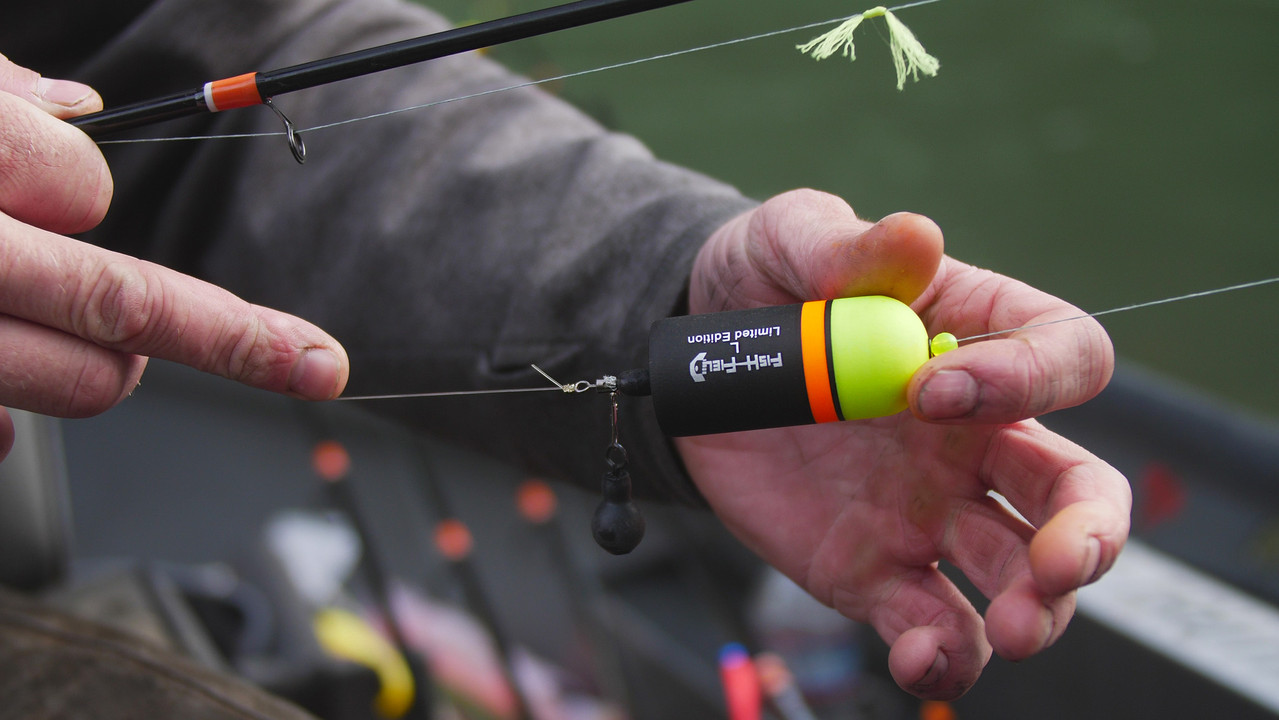Bobber Doggin' for Winter Steelhead
Bobber doggin' is a fishing technique that has become popular for targeting steelhead, especially in rivers and streams. It's a method that allows anglers to fish for steelhead in areas with moderate to fast currents, where traditional drift fishing or fly fishing techniques may be less effective.
The basic concept of bobber doggin' involves using a long, sensitive rod along with a sliding flat bottom float (bobber) and a weight. The bait or lure is then suspended beneath the float and allowed to drift naturally along the bottom of the river or stream, giving it a natural and enticing look for steelhead.
Key components of bobber doggin' include the use of a sliding bobber stop, which allows the angler to adjust the depth of their presentation, and the use of soft beads, yarn ball or soft plastic lures to provide a natural-looking offering to the steelhead.
Bank anglers employing the bobber doggin' technique typically wade into the river and systematically work their way through promising runs and riffles, carefully presenting their bait or lures to likely holding areas where steelhead are known to congregate. Bobber doggin' from drift boats can cover more water so it's usually preferred by steelhead anglers.
Bobber doggin' can be an effective and engaging way to target steelhead in a variety of river and stream conditions, and it has gained a dedicated following among them. As with any fishing technique, success often depends on understanding the specific conditions and behaviors of the fish being targeted, as well as adapting to the unique characteristics of the river or stream being fished.
Setting the bobber depth for bobber doggin' steelhead can be crucial for a successful fishing outing. Here's a general method for setting the bobber depth for this technique:
1. Determine the water depth: Use a depth finder or estimate the depth of the water where you'll be fishing. This will give you an idea of how deep the steelhead are holding. With bobber doggin', your weights/sinker should always be dragging on the bottom. Currents push against the flat bottom of doggin bobber which keeps your lure off the bottom.
2. Adjust the bobber stopper: A bobber stopper is a small, adjustable knot or piece of rubber that is placed on your line to set the depth of your bait. Slide the bobber stopper up the line to the desired depth, which is usually deeper than the water depth to ensure your bait is near the bottom where steelhead often hold.
3. Attach the bobber: Once the bobber stopper is in place, attach your bobber to the line above the stopper.
4. Test the depth: After casting your line, watch the bobber to see if it floats at the desired depth. If it's too shallow or deep, reel in your line and adjust the bobber stopper accordingly.
5. Fine-tune as needed: It may take some trial and error to find the ideal depth at which the steelhead are feeding. Be prepared to make small adjustments until you find the sweet spot.
Keep in mind that the specific depth at which steelhead are feeding can vary based on factors such as water temperature, flow, and time of day. It's often useful to experiment with different depths until you start getting bites.
Find All Our Steelhead Tackle Here.
EXPLORE POPULAR ARTICLES
-
Crabbing in the Pacific Northwest
Nov 11th 2024Crabbing in the Pacific NorthwestThe Pacific Northwest (PNW) is a region known for its stunning land
-
Salmon Fishing in the Pacific Northwest: A Guide to the Best Angling Experience with Fish-Field
Nov 7th 2024The Pacific Northwest (PNW) is known for its stunning landscapes, rich natural resources, and, of co



